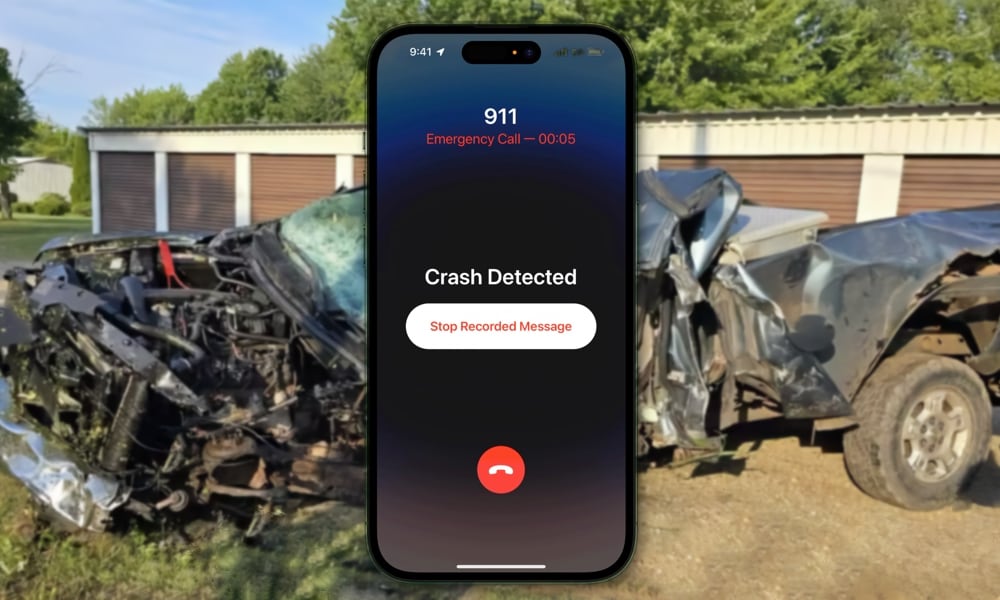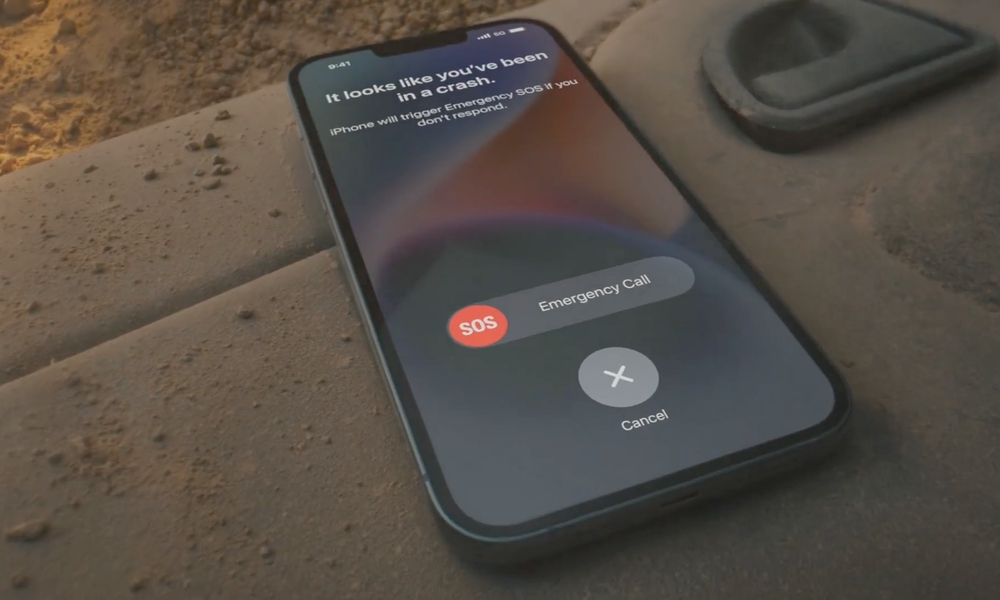iPhone Calls for Help When Sleeping Teen Crashes
 21 WFMJ
21 WFMJ
Toggle Dark Mode
While many of the incredible stories we hear about Apple products saving lives often revolve around the Apple Watch and its health monitoring features, the iPhone frequently also comes to the rescue, as it did in this case of a weary 16-year-old girl.
As reported by Pennsylvania’s 21-WFMJ, Lindsay Laskovac of Greenville was driving home in the wee hours of the morning on August 2 when she nodded off and fell asleep behind the wheel. While she was sleeping, her pickup truck developed a dangerously close relationship with two poles and some trees, coming to a stop near a body of water.
Thankfully, while Laskovac remained unconscious, her iPhone was on the job. The Crash Detection feature kicked in on her iPhone 14, automatically calling 911 for help. The teenage girl woke up to hear a dispatcher on the phone, but not right away — it reportedly took a while for her to respond.
” [Lindsay] must have heard the [dispatcher’s] voice calling out to her, so she was actually on [the phone] for 22 minutes. This technology enabled the rescue workers to be able to find her,” Lindsey’s mother, Laura Laskovac, told WFMJ.
What’s even more interesting is that Lindsay’s mother had no idea this feature existed until after the emergency dispatchers told her that her daughter’s iPhone had made the call by itself:
The person from Fire and Rescue told me that 911 said the phone initiated the call. So I looked further into it to find out exactly who made a call and how it happened, and I discovered that iPhones, if you have 14 or newer — and she has the iPhone 14 — has an automatic Crash Detection on it, if you have the setting on.
Laura Laskovac
That’s likely because Crash Detection is enabled by default on new iPhones. That’s led to some false alarms, but as Lindsay’s story shows us, it’s far better to be inconvenienced than dead.
Considering the teenage girl suffered serious injuries, including pelvic and hip fractures and a broken cervical spine, it’s not hard to imagine how the situation could have ended badly had the iPhone 14 been unable to summon help on her behalf. Laura Laskovac told WFMJ the family is grateful for the feature and is now determined to raise awareness so that others can understand how it works.
For instance, while Crash Detection should be enabled on any iPhone 14 or newer model, it defaults to only calling emergency services (911 in North America). However, if you’ve taken the time to also designate Emergency Contacts, they’ll be notified by a text message at the same time the 911 call is placed. The message even includes your location, and automatically updates if your location changes. These notifications are part of the Emergency SOS feature of the iPhone and Apple Watch, and will be sent the same way for Crash Detection (available on the iPhone 14 or Apple Watch Series 8/Ultra/SE2 and later models), Fall Detection (Apple Watch Series 4 and later models), or if you manually initiate an emergency SOS call by holding down the side button for more than a few seconds or dragging the “SOS” slider.
While it appears that Lindsay Laskovac hadn’t set up that feature, that wasn’t the case for Hannah Ralph, a 21-year-old Canadian musician whose life was saved by Crash Detection in 2023. When Hannah suffered a potentially fatal car crash in a remote part of Ontario, she had her childhood best friend, Grace Workman-Porecki, listed among her emergency contacts. The emergency SOS call and messages went out so quickly that by the time Workman-Porecki contacted first responders, she was told that paramedics were already on-site and had summoned an air ambulance and firefighters to extract her from the vehicle.
That’s a testament to the efficiency and professionalism of the local emergency services dispatchers. Still, it’s always a good idea to keep your closest friends and family members informed, as they may be able to provide first responders with additional help or more crucial information to facilitate a rescue operation.
Lastly, it’s also worth mentioning that Crash Detection works even if you’re far from civilization, since it can also communicate using Emergency SOS via satellite when necessary.
Enable Crash Detection and Emergency Contacts
Although Crash Detection should be enabled by default, it doesn’t hurt to take a quick trip into the Settings app to make sure it’s on. Here’s where to find it:
- Open the Settings app on your iPhone.
- Scroll down and select Emergency SOS.
- Ensure the Call After Severe Crash is toggled on.
Below that, you’ll see a list of Emergency Contacts. Tap Edit Emergency Contacts in Health to be taken to your Medical ID in the Health app. In addition to including your list of Emergency Contacts, you can store additional information here, such as your blood type and any medications you’re taking. This can be invaluable in the event that first responders find you unconscious. The Show When Locked and Share During Emergency Call settings at the top of this screen let you choose how this information can be made readily available in an emergency.
If you lead an active lifestyle, there may be times when you need to toggle Crash Detection off to prevent inadvertently calling emergency services. However, it’s also important to note that your iPhone won’t call emergency services without giving you plenty of warning. If your iPhone (or Apple Watch) detects something that it believes is a crash, it will first aggressively vibrate and sound loud whooping noises to get your attention. You’ll have up to 20 seconds to cancel that. If you fail to respond, the Emergency SOS feature will be triggered to call 911 and notify your emergency contacts that you’ve been involved in a severe crash.
If the 911 call is placed automatically, emergency responders will hear a looped audio message telling them that your iPhone has detected a severe car crash and that you’re unresponsive, while also reading out your latitude and longitude with a search radius. It then leaves the mic open so you can speak with emergency responders if you are conscious but can’t reach your iPhone or Apple Watch, which was seemingly the situation Lindsay Laskovac found herself in.
If you’re an Apple Watch user, you can also toggle the Crash Detection setting on or off by going to Settings > SOS. However, the setting is linked to your iPhone, so if it’s enabled or disabled on your iPhone, it will also be automatically enabled or disabled on your Apple Watch, and vice versa.









